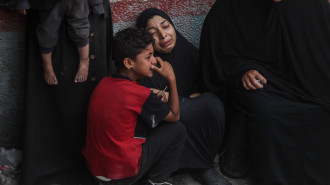
How are MENA climate disasters exposing the weakness of the region's research infrastructure?

The first anniversary of the Derna flood disaster that killed thousands in Libya has brought back memories of the dangers of severe weather events and natural disasters, especially since another storm hit the United Arab Emirates and the northern coast of the Sultanate of Oman last April.
The UAE storm was described as the strongest in the history of the Arabian Gulf region. The heavy rainfall disrupted public life in the region and caused significant damage to infrastructure, killing at least 20 people in Oman and one person in the UAE.
There are no exceptions in climatic disasters
However, the UAE storm was not the beginning of serious climate events and natural disasters in the Arab region over the past two years.
In October 2021, the coasts of the Sultanate of Oman overlooking the Arabian Sea — part of the Indian Ocean — were hit by a devastating cyclone (Cyclone Shaheen) that caused a lot of damage to infrastructure, agricultural land and homes, while cutting off communication towers and resulting in economic losses and material damage.
In September 2023, the northeastern region of Libya was hit by a storm that left more than 5,000 dead and thousands injured, in addition to destroying the city of Derna, about a third of which was swallowed by the sea.
Entire neighbourhoods were flooded, especially after heavy rains caused the collapse of two dams, which led to more water flowing into areas already submerged by seawater.
In November 2021, the United Nations Office for Disaster Risk Reduction in the Arab region warned of an increase in the frequency of tropical cyclones on the coasts of the eastern and southeastern Arab region in the Sultanate of Oman, the Emirates, Yemen, Djibouti, and Somalia.
According to a study published in January 2023 in Communications Earth and Environment, the total value of physical damages identified for all ports in the Middle East and North Africa (100 ports) was estimated at US $67 million annually.
Although the region is one of the most exposed to environmental risks in the world, whether floods, sudden heavy rains, hurricanes, storms, droughts, or extreme heat, the research infrastructure in Arab countries is still unable to fill the gaps in predictive studies related to climate and meteorology, which rely primarily on satellites.
Deficiency of research infrastructure
"The Arab region lacks satellites dedicated to meteorological monitoring, and therefore, except for King Abdullah University of Science and Technology in Saudi Arabia, there are no Arab climate models. Rather, climate models specific to the region are mostly issued by Western research bodies or Japan," Ahmed Kenawy, assistant professor of climate geography at Mansoura University, told The New Arab.
However, even this "exceptional" model developed by King Abdullah University researchers — with a spatial accuracy of 1 to 5 kilometres — does not cover the entire Arab region but rather focuses on Saudi governorates only.
The reason for this deficiency, according to Kenawy, is that this type of climate model requires super-fast computers, while the research infrastructure in most Arab universities does not allow the use of this technology.
The frequency of violent weather events in the Middle East and North Africa region is due to profound changes in the hydrological cycle worldwide, according to Albert Van Dijk, Professor of Hydrology at the Australian National University, who says that these changes have resulted in steady increases in air temperature and humidity levels, as well as drought and sudden rains.
In statements to The New Arab, Van Dijk points to the importance of improving climate monitoring capabilities and early detection systems in countries in the region and regional cooperation to deal with natural disasters that have become more common in the last decade.
Improving weather monitoring systems
A recent study published in Nature Communications revealed that the Derna disaster could be repeated in other areas of the Arab region.
The study supervisor, Essam Heggy, professor of earth sciences at the University of Southern California in the United States, stresses the importance of countries in the region preparing for floods from the time of the drought, warning that the Derna incident could be repeated in other Arab cities such as Alexandria and New Alamein in Egypt.
Explaining to The New Arab Heggy points out that techniques such as artificial rain can be used not only to irrigate lands but also to protect against floods when the moisture content in the soil drops sharply during drought periods. If this technology cannot be provided due to its high cost, attention must be paid to cleaning and preparing flood channels overlooking cities.
For his part, Kenawy believes that climate models cannot be relied upon to monitor violent weather events because they provide predictions for long periods of time and general averages and do not provide accurate predictions at daily levels, and therefore the alternative is to rely on satellites specialised in weather monitoring purposes, which provide data over a period of days. Arab early warning systems rely on these Western satellites.
Therefore, improving the research infrastructure in the region through specialised satellites, research centres, and early monitoring systems would improve the level of response to disasters and avoid as much as possible their negative effects, according to Kenawy.
Mohammed El-Said is the Science Editor at Daily News Egypt. His work has appeared in Science Magazine, Nature Middle East, Scientific American Arabic Edition, SciDev and other prominent regional and international media outlets
Follow him on X: @MOHAMMED2SAID




 Follow the Middle East's top stories in English at The New Arab on Google News
Follow the Middle East's top stories in English at The New Arab on Google News


